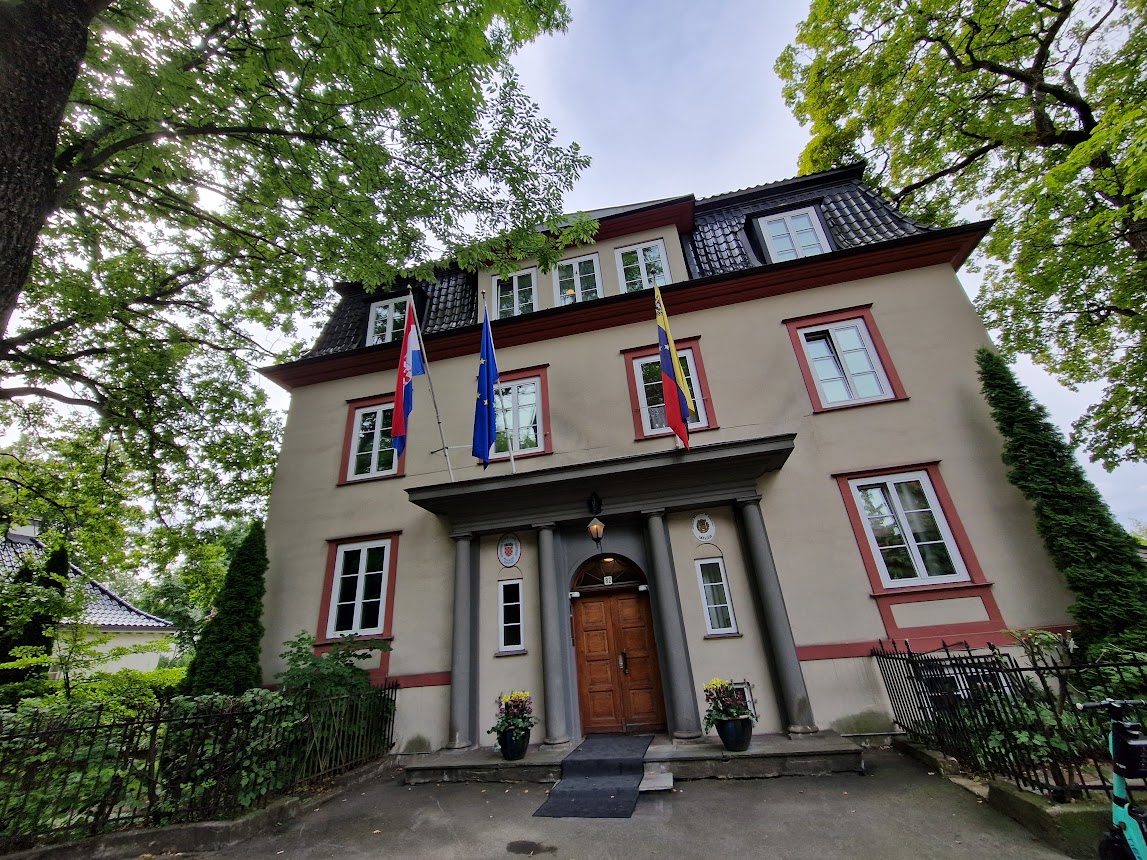During the summer months, the Norwegian capital attracts tourists from all over the world, but also seasonal beggars from Romania.
Postcard from Oslo by Robert Čoban
Everything is much more expensive than in the rest of Europe, alcohol in particular; cash is almost completely pushed out of use, and you can hear the Serbian (Croatian, Bosnian…) language spoken almost on every corner.
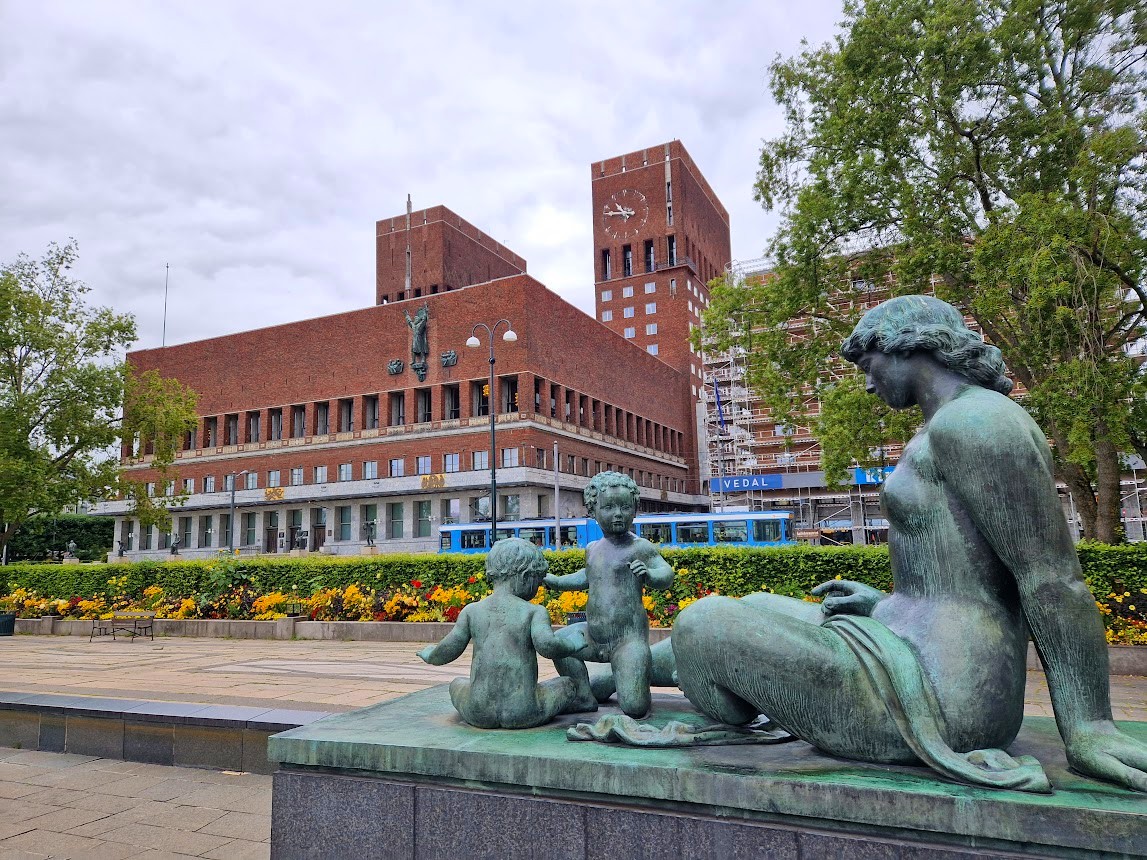
It’s ten o’clock in the evening and it’s still daylight in Oslo – the right time for a taking walk and collecting the first impressions about the city. Then I headed for the coast of the Oslo fjord.
The capital of Norway, the only European country I have not travelled to so far, leaves an impression that it is completely different from Stockholm, from which we arrived that evening. On the one hand, the city is full of new buildings, resembling Dubai North, everything is clean and well-organized… Nevertheless, on the square in front of the Main Railway Station, I come across dozens of Roma beggars in traditional dresses (almost as if they had arrived from a movie set or music concert video) who approach you and ask for money in perfect English by showing a paper with someone’s medical diagnosis. Unlike their counterparts in our region, they do not carry children in their arms. Later I heard that they are from Romania and that there is a regular summer migration of beggars who come during the peak tourist season and then return to the Carpathians in late September.
At the beginning of August, Oslo, the third northernmost capital in the world (only Helsinki and Reykjavik are further up north) had pleasant weather, plus 25 degrees during the day. Throughout my whole stay, I only wore T-shirts during the day.
The Norwegian National Opera, Ballet and National Theatre have 1,100 rooms, spanning a total of 49,000 square metres
I continue my journey. The train station is now behind me and in front of me are two impressive new buildings – the Opera House and the Munch Museum. This is one of the few buildings which roof you can climb, not by stairs, but by a slightly sloping white marble wall that simply tempts you to do so.
The Norwegian National Opera, Ballet and National Theatre have 1,100 rooms, spanning a total of 49,000 square metres. The main auditorium can accommodate 1,364 people, and the two other performance stages can accommodate 200 and 400 spectators, respectively. The main stage is 16 metres wide and 40 metres deep. The exterior surfaces of the building are clad in marble from Carrara in Italy and white granite so that it appears as if the building is emerging out of the water. This is the largest cultural building built in Norway since Nidaros Cathedral in Trondheim was completed around 1300.
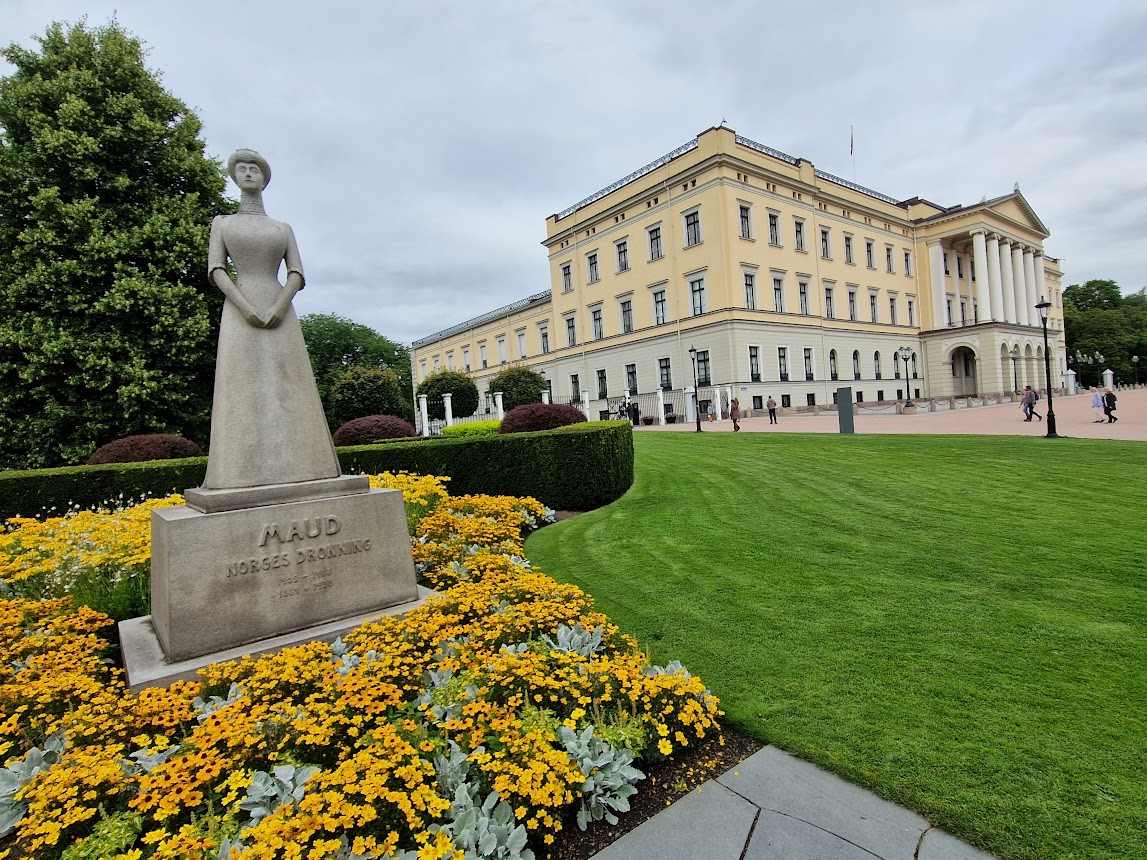
In 1999, after a long national debate, the Norwegian authorities decided to build a new opera house in the city. A design competition was launched and out of 350 entries, the judges chose the Norwegian architecture firm Snøhetta. Construction began in 2003 and was completed in 2007 ahead of schedule, with the entire project costing NOK 300 million (around $52 million at the time), NOK 4.4 billion under budget (around $760 million). The grand opening on April 12, 2008, was attended by King Harald, Queen Margrethe II of Denmark, the President of Finland, Tarja Halonen, and other statesmen. During the first year, 1.3 million attended cultural events in the building. The Opera house won the Culture Award at the Barcelona World Architecture Festival in October 2008 and the European Union Prize for Contemporary Architecture in 2009.
After a hearty breakfast dominated by moist Norwegian bread, I headed to the cruise port where I rented a bike at the Viking Hiking & Biking agency located in a port hangar.
The daily rental price was the highest I have paid anywhere in the world, bearing in mind I have rented bikes from Laos to Manhattan. 390 Norwegian kroner (39 euros) for one day (practically 8 hours) and another 1,000 kroner as a deposit in case I break something or the bike gets stolen, which has happened to me before, last time in Odessa in 2019.
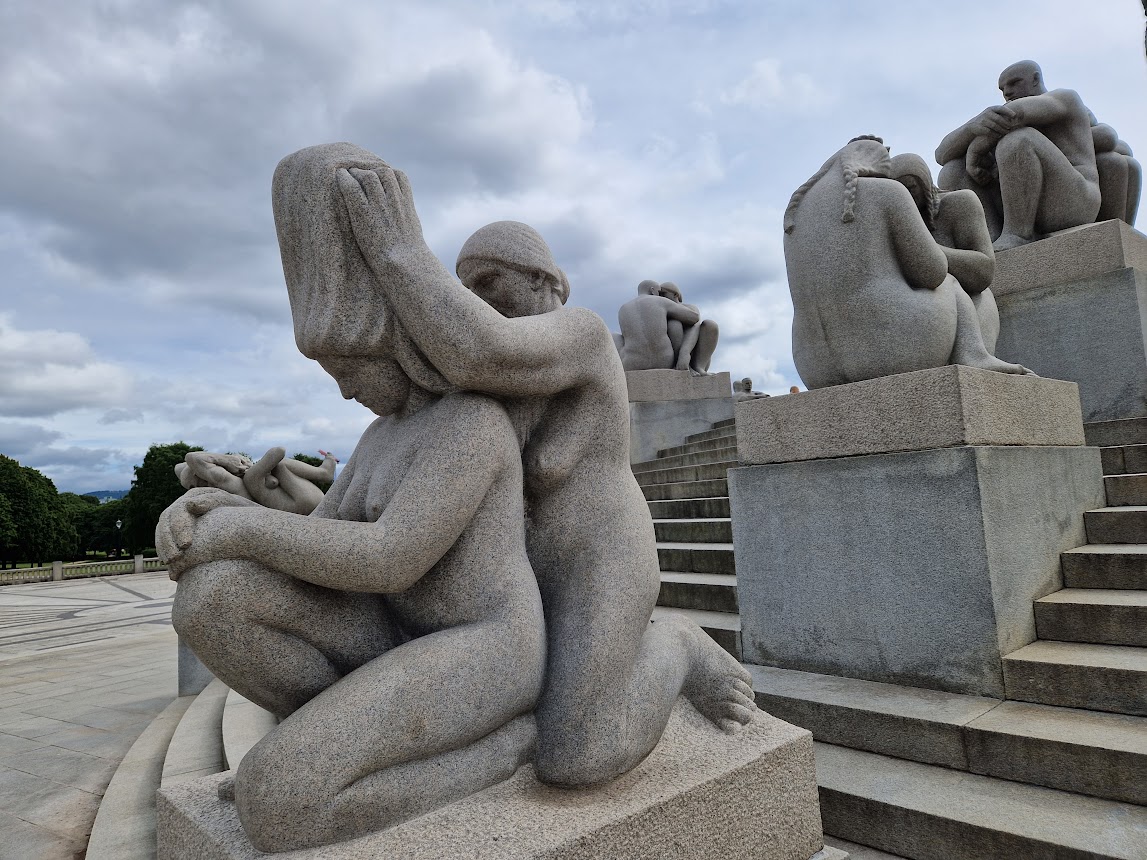
The blonde teenager who rented the bike to me also gave me a tablet to fill in my credit card information because that was the only way to pay for the service. By the way, Norway and Sweden have been almost completely cashless for several years (since before the pandemic). In museums, shops and restaurants, it is almost impossible to pay with cash. The prices of an average lunch for five people, which is how many of us came to Oslo, ranged from 200 to 280 euros (appetizer, meal and half a glass of alcoholic beverage). In Norway (it’s similar to other Nordic countries I’ve been to), alcohol is especially expensive – a half-litre glass of beer in a pub or restaurant costs between 6 and 12 euros, while a glass of wine is even more expensive – from 12 to 20 euros. Ordering a bottle of wine, a usual practice by our Mediterranean standards is not even thought about here.
I walk along the coast in the direction of Frogner Park and the first thing I came across, as I was leaving the harbour was, a memorial to the victims of the maritime accident – on April 7, 1990, a fire broke out on the ship Scandinavian Star which killed 159 people. The ship, which was built in 1971, was sailing between Oslo and Frederikshavn in Denmark when the fire broke out. The captain and crew abandoned the ship before all passengers evacuated. The monument was erected in 2006 and depicts a mother saving her children, one of whom is reaching for a toy left on the floor. The ship, by the way, did not sink, it continued to sail under other names until 2004 when it was finally scrapped. I also saw a temporary monument to another tragedy, the one caused by Andres Breivik in 2011, who killed 77 and injured 319 people in a terrorist attack. In the residential area of Oslo, I came across many luxury villas that house embassies. It is interesting to note that Croatia and Venezuela share the same luxury houses.
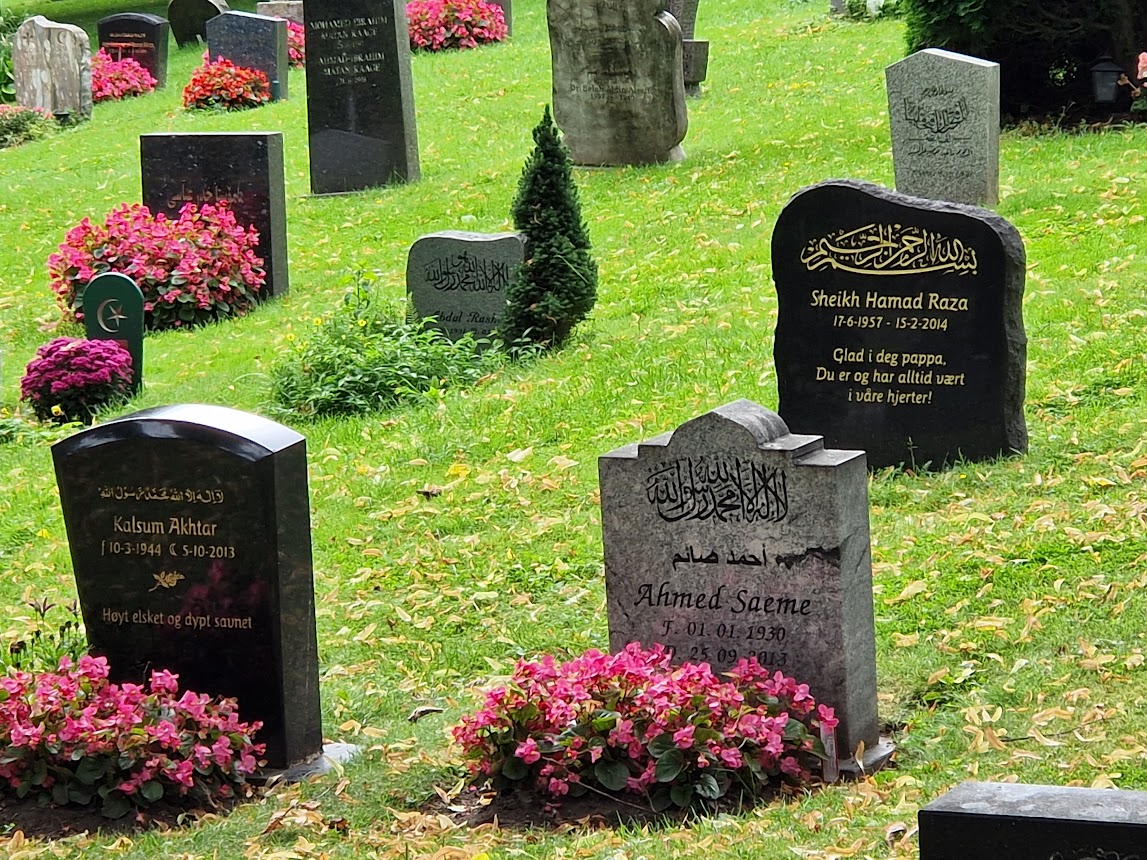
Oslo’s Protestant Cathedral, the one that stands today in the city centre, was built between 1694 and 1697. The Norwegian royal family and the Government of Norway occasionally use it for public events. The church was closed to the public from 2006 to 2011 for renovations. There are tours every day from 10 a.m. to 4 p.m., and Sunday mass is at 11 a.m. The cathedral belongs to the Protestant Church of Norway, which membership numbers 68% of the country’s population.
A statue of Princess Maud of Wales stands in front of the Royal Palace in Oslo. British Princess Maud, daughter of King Edward VII, became Queen of Norway by marrying Haakon VII.
A huge territory in Antarctica is named after her – Queen Maud Land – claimed by the Norwegian crown.
The Royal Palace was built in the 19th century as the Norwegian residence of King Charles XIV John, who ruled the union of Sweden and Norway. Today’s Norway gained complete independence only in 1905 when its citizens voted in a plebiscite with 95.50% to break state ties with the neighbouring Kingdom of Sweden. Today, King Harald V dines in the palace and his son, Crown Prince Haakon lives in the Skaugum residence in Asker, west of Oslo.
In museums, shops and restaurants, it is almost impossible to pay with cash
I come to the famous Frogner Park, which features the sculptures by Gustav Vigeland, created in the period from 1924 to 1943. Sometimes tourists call it the Vigeland Park. It spans 320,000 square metres and features as many as 212 Vigeland sculptures of men, women and children in the most diverse possible poses, some of which are quite provocative even by today’s standards.
The park is visited by over a million visitors annually and is truly one of the most impressive open-air museums I have had the opportunity to visit. It was a weekday, but the park was full of tourists, and children in school uniforms, and I saw several sports teams in tracksuits with their club’s logos. After visiting some other similar places in the city, I got the impression that Norwegians pay a lot of attention to collective tours of cultural institutions, which is a nice custom that almost completely disappeared in our country after the 1980s.
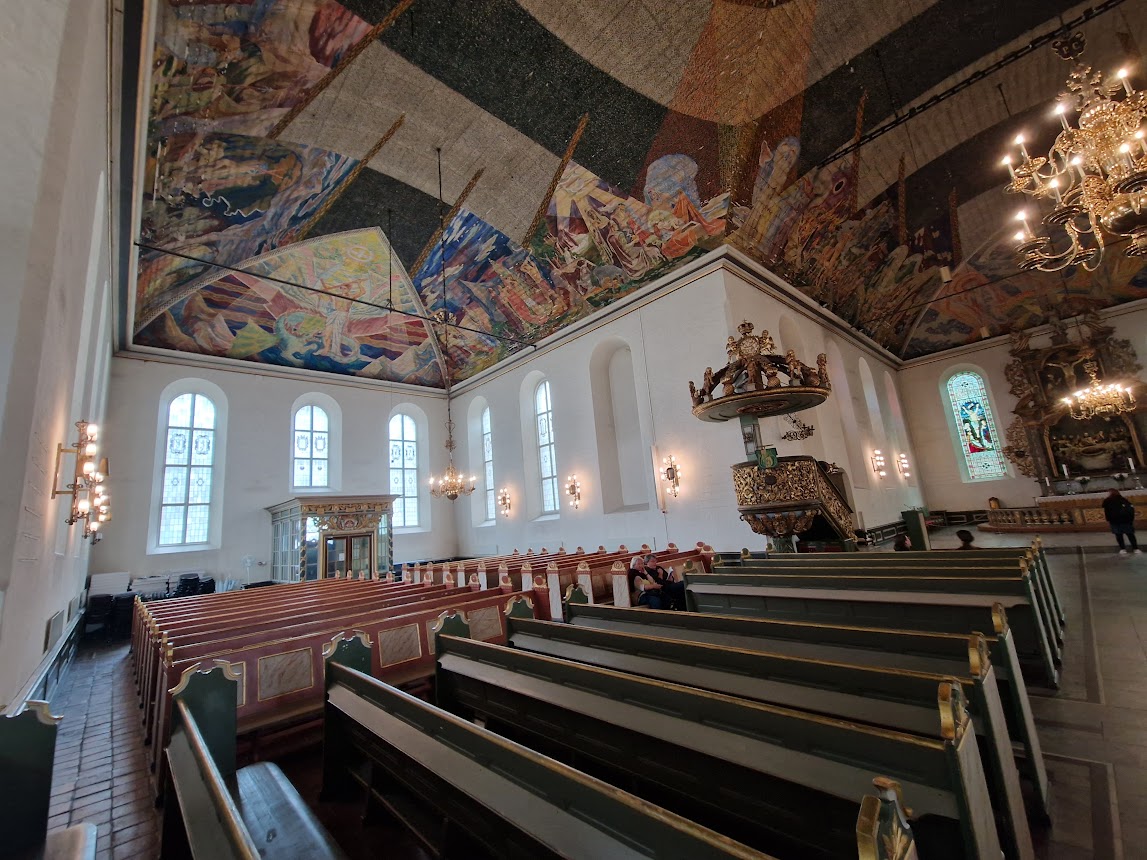
Certainly, the most impressive building created in Oslo in the 20th century is the City Hall. It was built from 1931 to 1950. The architects Arnstein Arneberg and Magnus Poulsson were in charge of the construction. Every December 10, on the anniversary of Nobel’s death, the Nobel Peace Prize is awarded in the City Hall in the presence of the Norwegian royal family and the prime minister.
Particularly valuable are works of art – sculptures, paintings and murals in, on and around the City Hall. After several competitions in 1937, as many as eight painters and 17 sculptors were hired to do them. Most of the works were completed by 1950 when the Town Hall was officially opened, while the sculpture park was being completed until the late 1960s.
The west wall of the building is dominated by a sculpture of an equestrian, Harald III of Norway, king from the 11th century, the work of the artist Anna Grimdalen. The sculpture of Saint Hallvard, the work of Nic Schiøll, is located in front of the City Hall. A relief by Dagfin Werenskiold adorns the wall overlooking the square and presents multicoloured descriptions from the poetic epics of ancient Norway. Joseph Grimeland designed the bronze relief above the entrance as well as the sculpture “Oslopiken” (“Girl from Oslo”) on top of the wall. The six Per Pale Storm sculptures in front of the Town Hall represent the different types of tradesmen and builders who participated in its construction.
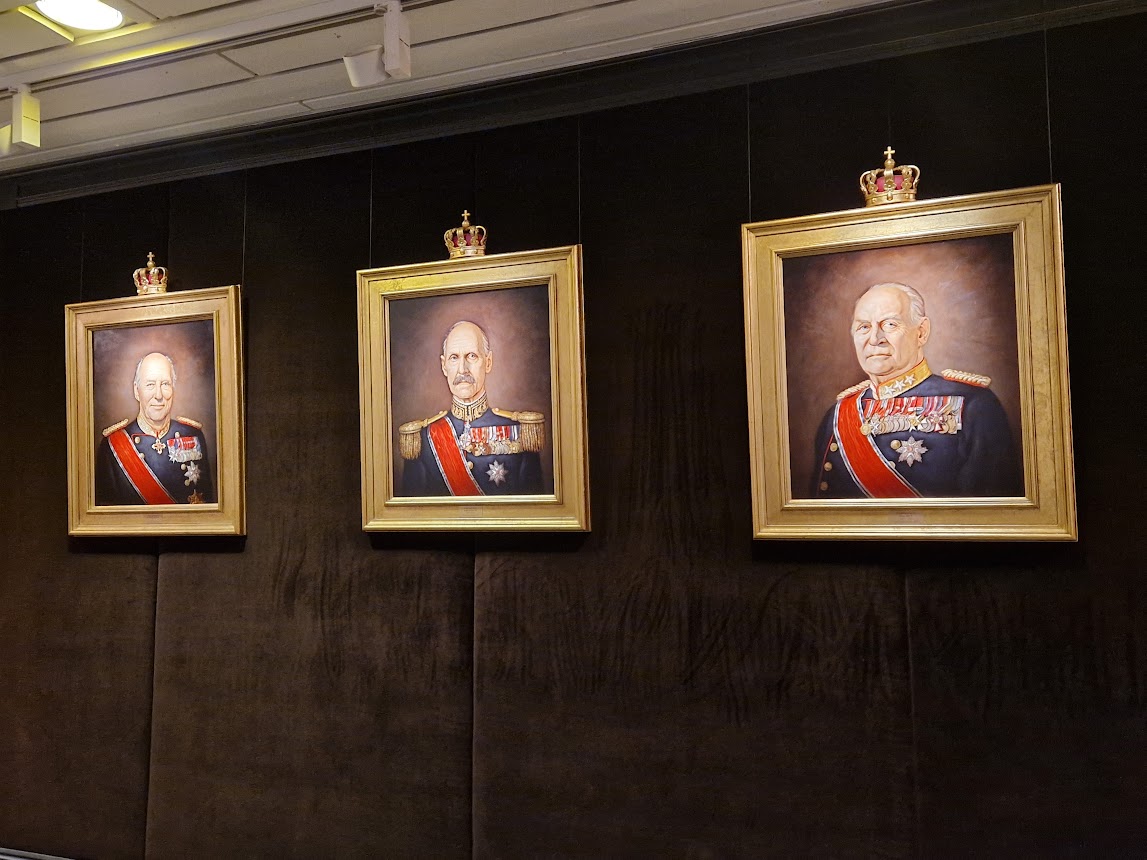
The interior of the City Hall and the Central Hall was decorated by Henrik Sorensen and Alf Rolfsen. The hall is 31 metres wide, 39 metres long and 21 metres high. The floor and parts of the walls are made of marble. There are a substantial number of pictures that depict Norway and Oslo in the interwar period, as well as during the 1940-1945 occupation.
In the hope that the Norwegian weather forecast on the yr.no website, which I consult wherever I go in the world, will not be accurate to the minute this time – despite the predicted rain, I headed to Ekenberg hill, which offers the most beautiful view of Oslo.
It was already drizzling when I made it to Ekenberg, which has a park with sculptures made by artists from around the world collected by Christian Ringnes (age 68), a wealthy Norwegian collector. The park owned by the Oslo authorities today has as many as 80 works of art after additional purchases worth 35 million euros and from the initial 31 sculptures.
The Norwegian Resistance Museum is located in Akershus Fortress in Oslo and covers the period from 1940 to 1945 when the country was under the occupation of Nazi Germany
Walking down the hill I come across the Gamlebyen cemetery which has existed since 1874 and is located across the street from the hospital. It is similar to the cemetery on the island of St. Michele in Venice where the patients are frequently looking from the windows of their rooms. There is also a Muslim part of the cemetery where the gravestones are built in line with the Islamic faith, but they are decorated and arranged like the graves of their fellow Protestants. This is a nice example of adaptation and coexistence, even in death.
As I approached the city centre, where the rest of the team was expecting me for lunch, the rain intensified and turned into a downpour, so I decided to spend the afternoon “under the roof”, i.e. in the National Museum, the popular NaM.
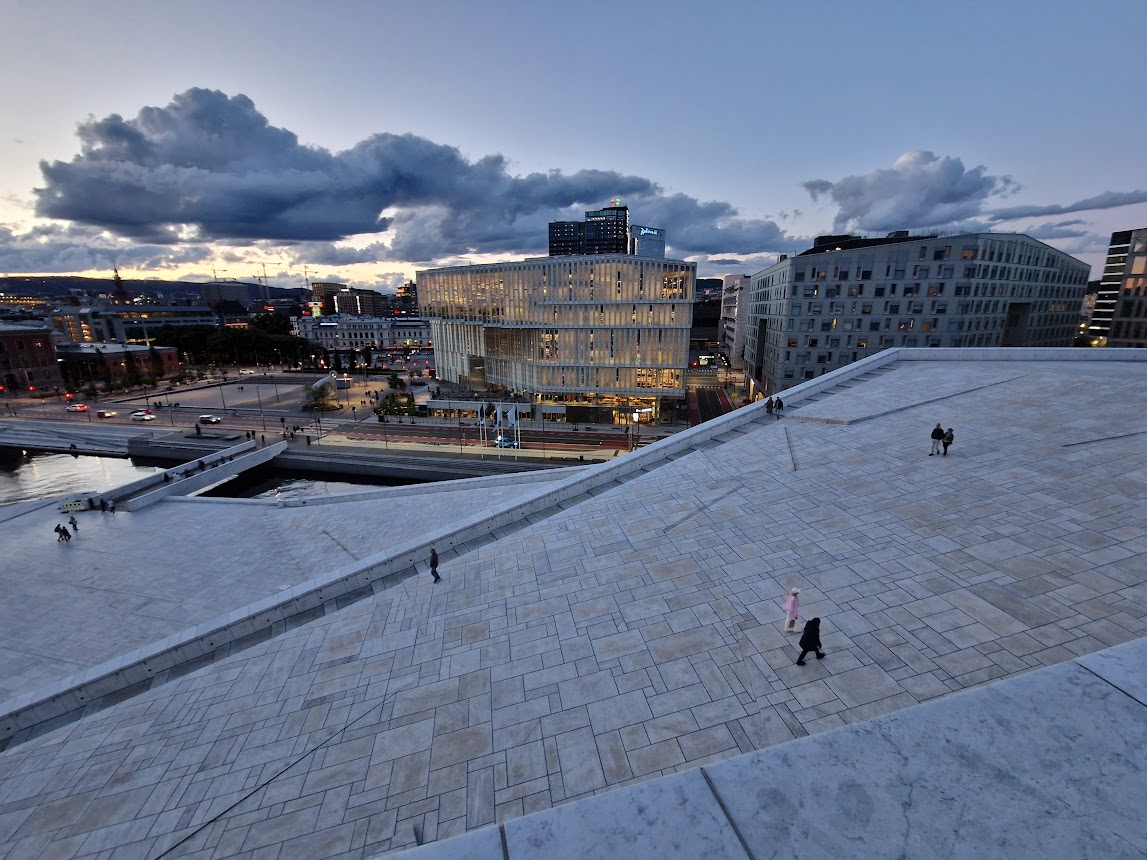
The Museum’s collection includes as many as 400,000 exhibitions, including the first copy of Munch’s “The Scream” from 1893. The National Museum was created in 2003 by the merger of the Museum of Architecture, the Museum of Industrial Art, the Museum of Applied Art and Design, the Museum of Contemporary Art and the National Gallery of Norway. In June of this year, the museum moved into a completely new building on the fjord’s shore.
Among the hundreds of works I looked at, I was particularly impressed by the canvases of Bendik Rhys, an artist who spent most of his life being treated for mental illness. “Bendik and Arolilja” (Norwegian Romeo and Juliet) were two lovers who die in the ballad because of their forbidden relationship. Rhys’ work “Eviction”, which shows giant policemen evicting tiny women and children from their houses, is also impressive.
Reidar Aulie’s painting “April 9, 1940” depicts a truck carrying a coffin covered with a Norwegian flag, was my introduction to tomorrow’s visit to the Norwegian Resistance Museum. Namely, April 9 is the date when Hitler invaded Norway and Denmark in 1940, and it is deeply embedded in the local national consciousness, like April 6 in ours.
The Norwegian Resistance Museum is located in Akershus Fortress in Oslo and covers the period from 1940 to 1945 when the country was under the occupation of Nazi Germany. It was founded in 1966, and in 1970, on the 25th anniversary of liberation, it was ceremonially opened by the then Crown Prince Harald (today’s king).
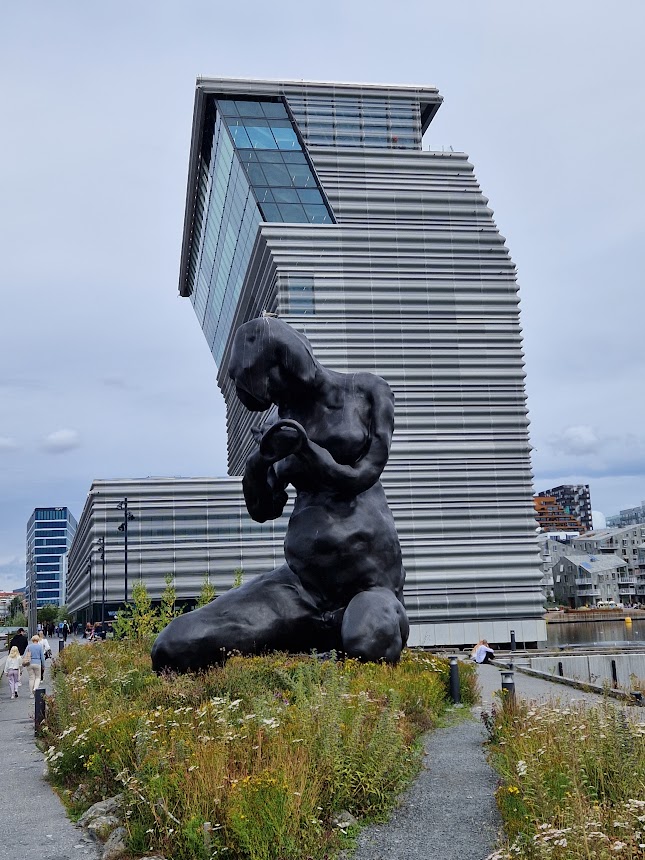
The ticket guy routinely asks me what country I’m from because he needs to put that in their records. When he heard the answer, he suddenly showed interest, said that he had studied Serbian and that he knew what kind of deep ties between Norway and Yugoslavia were forged precisely in the historical period this museum covers. Namely, anyone who has ever been to Kikinda knows that the hotel in the city centre (currently unfortunately devastated) is named after the Norwegian city of Narvik, where the Øvre Jernvann camp was located, with 588 prisoners from Yugoslavia who were brought here in 1942 and 242 of whom died or were killed. Near this camp, there was another one – Beisfjord camp, where about 900 prisoners from Yugoslavia were brought in 1942, with most of them (about 80%) soon dying there and some were taken to the Øvre Jernvann camp.
By the way, the Serbian (Croatian, Bosnian…) language can be heard on almost every corner. While I’m waiting for company in a pizzeria, I chat with two Bosnian women – the waiter in the cafe is Macedonian and I was stopped on the street by a woman from Bela Crkva who recognized me from TV. According to official data, 10,000 Serbs currently live in Norway, half of them in Oslo.
At the very entrance, there are portraits of the three kings of this country who returned from exile on June 7, 1945, after Hitler’s Germany capitulated, welcomed by a cheering crowd of 400,000 people. The current king Harald V was an eight-year-old boy at the time, his father Olav V was the crown prince and his grandfather Haakon VII was the beloved king.
I stopped at the audio recording of a speech by Vidkun Quisling, a Norwegian version of Nedić, in which he called for an end to resistance to Hitler. A man whose last name became a byword for traitors and collaborators throughout the world was captured at the end of the war and sentenced to death by firing squad.
At the exit of the museum, there is a statue “Glory, Glory with Churches” depicting a woman returning home after the war.
After lunch in a restaurant with a view of the Munch Museum, in the Bjørvika quarter, which we affectionately called “Oslo Waterfront”, there was still enough time to visit the museum dedicated to the greatest Norwegian painter before leaving for the airport.
The Munch Museum moved into a new building a year ago. Before that, it was in the old building when, on August 22, 2004, armed robbers stole two of the artist’s most famous paintings – “The Scream” and “Madonna”. The paintings were found two years later and returned to the museum.
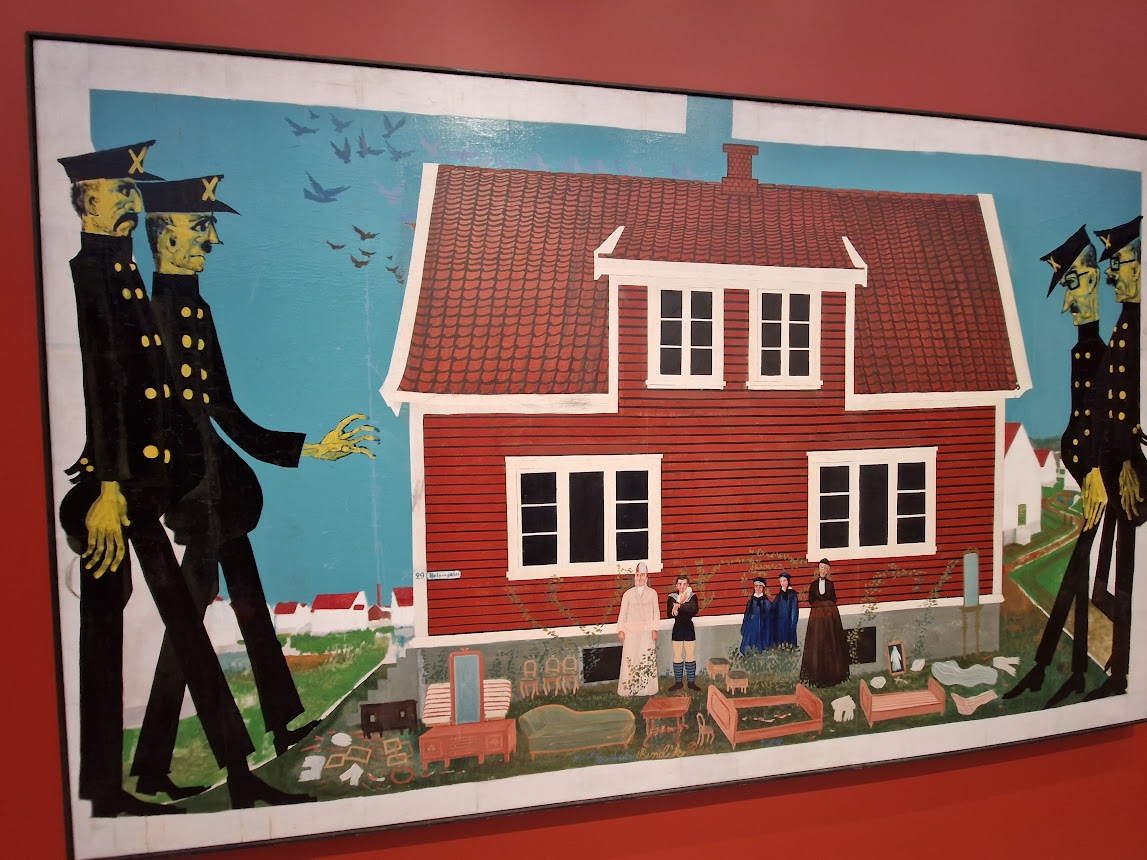
By the way, this was not the first theft of Munch’s “Scream”, the oldest version of the painting from 1893. It was stolen from the National Gallery on February 12, 1994, on the opening day of the Olympic Games in Lillehammer in Norway. The robbers even left the message “Thanks for the bad security!” After the gallery refused to pay the ransom of 1 million dollars, the Norwegian police embarked on an extensive operation in collaboration with their British colleagues and the Getty Museum. In May of the same year, “The Scream” was found. In 1996, six robbers were arrested, among them the famous Paul Enger, a former basketball player known for numerous robberies of works of art and jewels. Before that, in 1988, he stole Munch’s painting “Love and Pain”.
In today’s Munch Museum, there are three versions of “The Scream” – one lithograph, one crayon on cardboard and one oil on cardboard. Interestingly, you cannot see them at the same time, every few minutes one painting is “revealed” while the other two remain in the dark. The reason for this is the experts’ assessment that the techniques used by Munch require a limited amount of light during the day.
Another version is a part of the private collection of American investor Leon Black. In the Munch Museum, in addition to his works, there are also paintings by artists who were inspired by the works of the famous Norwegian, among them the most famous ones by Andy Warhol.
Travelling to the airport in the Scandinavian twilight that never gets truly dark, I think about how Munch, a painter from a small country, far from the main artistic trends of Europe and the world, became such a powerful inspiration to other authors and also to art robbers who seem to be unable to get rid of the obsession called: “To have a Munch!”
